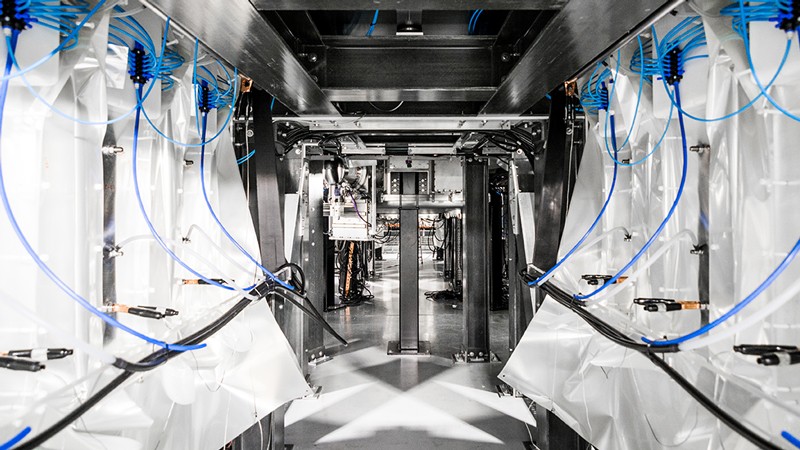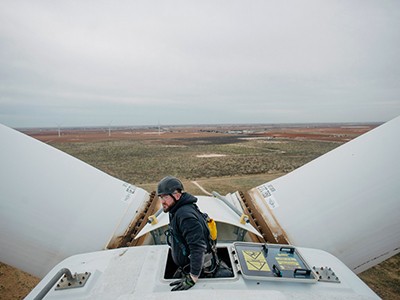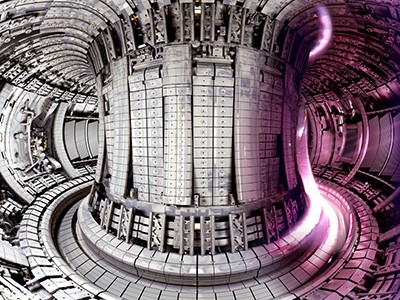The Star Builders: Nuclear Fusion and the Race to Power the Planet Arthur Turrell Scribner (2021)
To help the world reach net-zero emissions by 2050, Nick Hawker is betting on nuclear fusion. Co-founder of the start-up First Light Fusion, he says: “We need to be building plants, multiple, in the 2040s. And the first of a kind has to be built in the 2030s. Which means the physics problem has to be solved in the 2020s.” This pressure is the subject of The Star Builders — a book about those trying to harness the phenomenon that powers the Sun, as a source of almost limitless energy.
For decades, the quest for fusion power was a story of two government-funded pathways, culminating in mega projects: the US National Ignition Facility (NIF) and the international ITER collaboration, under construction in France. This history was detailed in Daniel Clery’s book A Piece of the Sun in 2013. Back then, some fusion start-up companies existed, but they weren’t taken seriously.
Times have changed, technologies have changed and the stakes have changed. With global temperature rises now bringing floods and fires to every door, the need for emissions-free energy production has never been clearer. Arthur Turrell takes a good look at some of the 25 or so private fusion companies pushing towards commercialization, and appraises them alongside the public projects. Be it University of Oxford spin-off First Light Fusion in Yarnton, UK, smashing a projectile from a rail gun into a target, or Jeff Bezos-backed General Fusion in Burnaby, Canada, compressing magnetized plasma with pistons, he shows how private companies with different ideas, new kit and an eye on the bottom line are re-energizing the field.
Turrell’s background is in plasma physics. (Full disclosure: we did our PhDs at Imperial College London around the same time, and I’m mentioned in the book’s acknowledgements.) Now, he’s a data scientist at the UK Office for National Statistics and the Bank of England. His is a clear and interesting introduction to the history, physics and economics of harnessing the energy produced by melding the nuclei of light atoms to make heavier ones. He argues that “investors are betting that private companies can succeed where governments have failed”. I take slight issue with this framing, but more on that later.
Passion and expertise
So who are the people involved in the challenge — the star builders? We meet ex-astronaut Jeff Wisoff, who is now responsible for the safe operation of the NIF in Livermore, California. Jonathan Carling explains what drew him to become chief executive of Tokamak Energy in Milton Park, UK, after working in engineering at Rolls-Royce (he has since left Tokamak Energy). These characters’ passion and expertise remind us that there are social and political factors affecting how fast this field can move, as well as technical and scientific ones.
Powerful statistics conjure the scale of the energy problem. Some 86% of the world’s energy is still generated by fossil fuels. Air pollution is thought to contribute to the deaths of 8.8 million people worldwide each year, and Earth hasn’t seen carbon dioxide levels this high for at least 800,000 years. Turrell quotes Ian Chapman, chief executive of the UK Atomic Energy Authority, as saying that in 2050, “We’re going to need half as much energy again as we use now.” Fusion could be a much-needed contributor. But no one has achieved the crucial milestone of break-even, the point at which the vast energy needed to create fusion reactions — which must run at temperatures of hundreds of millions of degrees — is recouped by the energy released.
Analogies also enliven the text. The hot plasma of deuterium and tritium in a tokamak — a multi-tonne magnetic toroid that is the most advanced method of containing controlled fusion reactions — has to be pure. So pure that vacuuming out all the other particles is like “removing all but a single star from the Milky Way”. Passengers cramming into a train carriage during rush hour (remember that?) come to represent increasing plasma density. Bremsstrahlung — radiation emitted by one charged particle as it is deflected by another — is like the wave when a speedboat turns.
But a ‘public versus private’ conceit is too simplistic. Start-ups, Turrell writes “are proposing to use millions of dollars, and some crazy ideas, to do what billions of dollars, and decades of scientific investigation, have been unable to”. In fact, the firms are building on foundations laid down by national laboratories and university research.
Audacious partnerships
Developing and integrating the technologies needed to form a working and economical fusion power plant is beyond the current scope of one company or public lab. The next phase could be like the public–private partnerships between NASA and companies SpaceX and Orbital Sciences to develop commercial transportation for the International Space Station, in which cost and risk were shared.
Decades of investment in collaborative programmes such as ITER, the NIF and the Joint European Torus in Oxfordshire, UK, plus programmes in plasma physics and high-energy-density physics, have brought fusion science to a point at which start-ups are commercializing ideas and new technologies. Now, governments are introducing programmes to stimulate the public and private sectors to work together. The key question is how best to make these partnerships flourish.
Star builders are optimistic by nature — you’d have to be, to tackle something so audacious. As a result, unrealistic timescales and over-promising have dogged fusion since the 1950s. More discussion on this would have been welcome. How much will fusion energy cost? And how long until it is powering our homes? The answers don’t yet exist. But investors, governments, utility companies and the public can be forgiven for wanting answers — and the scientists for trying to provide them.
The discussion of the dangers of fusion is thoughtful and illuminating, from the low-to-zero possibilities of weapons proliferation or meltdown to the real risks from the radioactivity that high-energy neutrons create. Objectively, Turrell compares the numbers of deaths per exajoule of energy generated by current sources such as fossil fuels, renewables and nuclear fission. Fusion emerges as much safer than any of them.
In the end, The Star Builders is realistic and positive — an interesting snapshot of the current situation and key players. And, as if the challenge of clean energy weren’t enough, Turrell has one last stretch for our imagination: to fusion propulsion for space travel. Humanity, he shows, is always reaching for the stars.
"start" - Google News
August 16, 2021 at 06:32PM
https://ift.tt/2VZi6cg
Can start-ups fast-track fusion energy? - Nature.com
"start" - Google News
https://ift.tt/2yVRai7
https://ift.tt/2WhNuz0
Bagikan Berita Ini



















0 Response to "Can start-ups fast-track fusion energy? - Nature.com"
Post a Comment